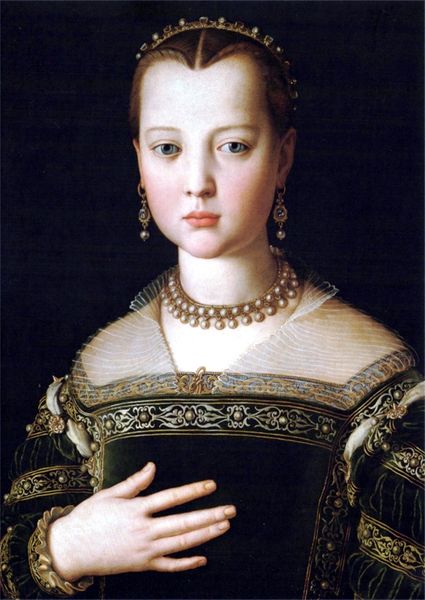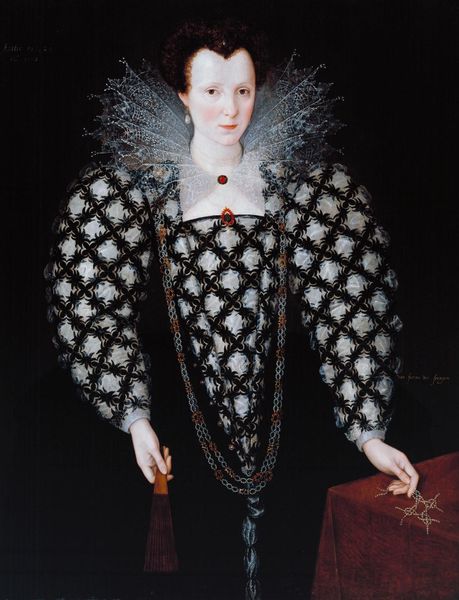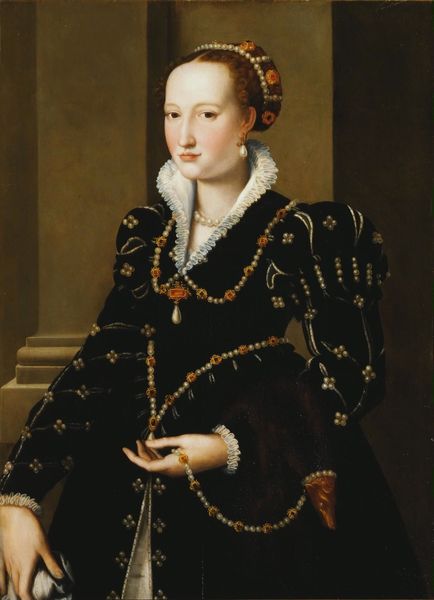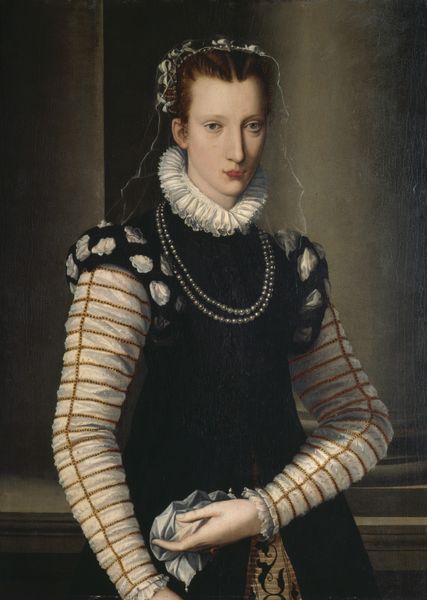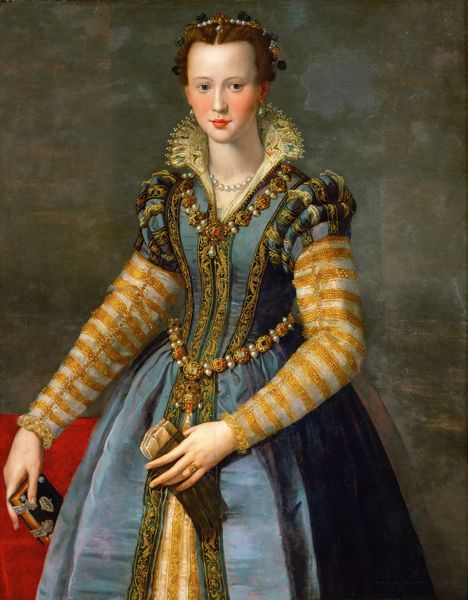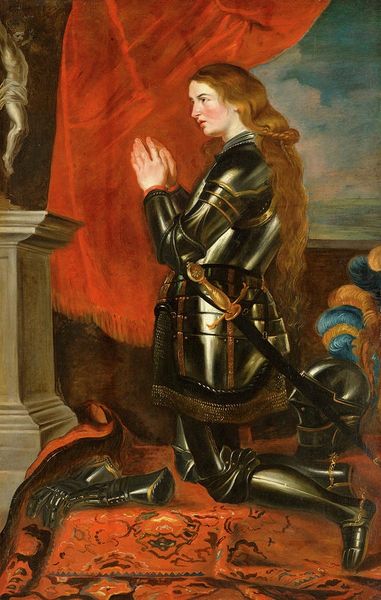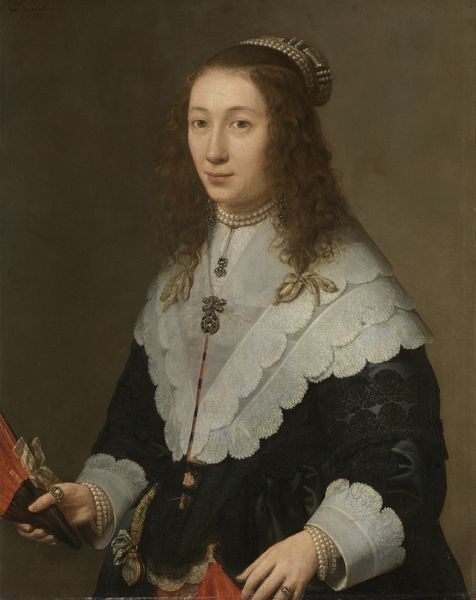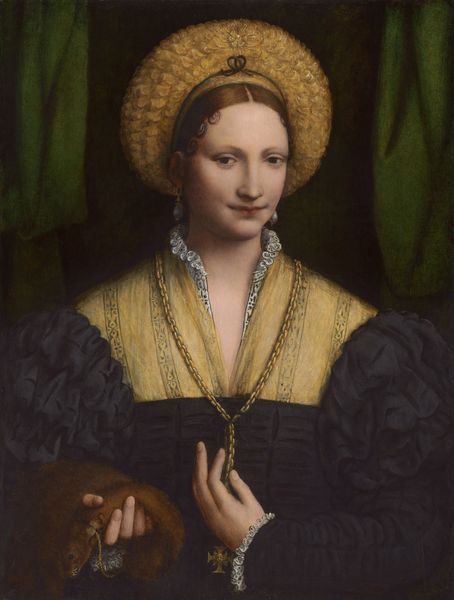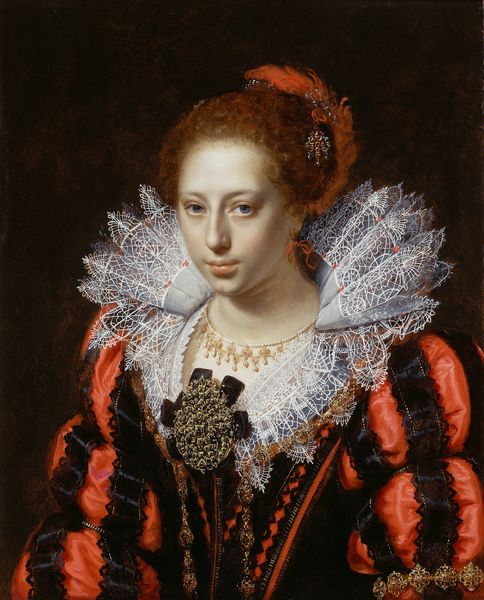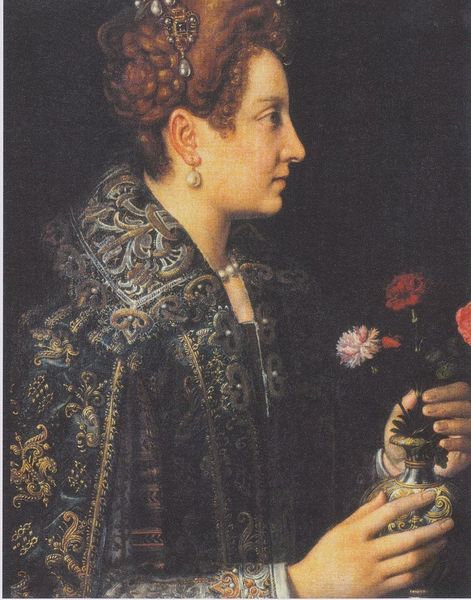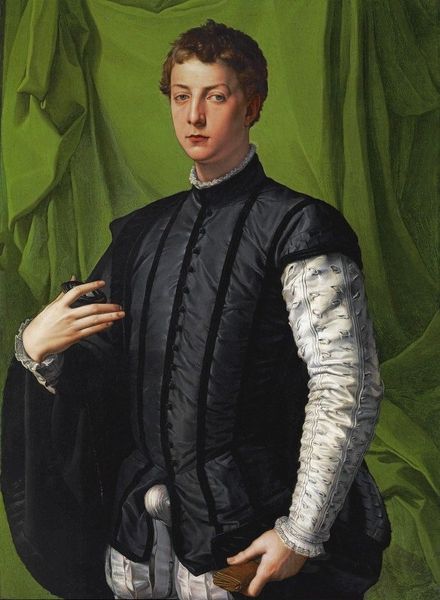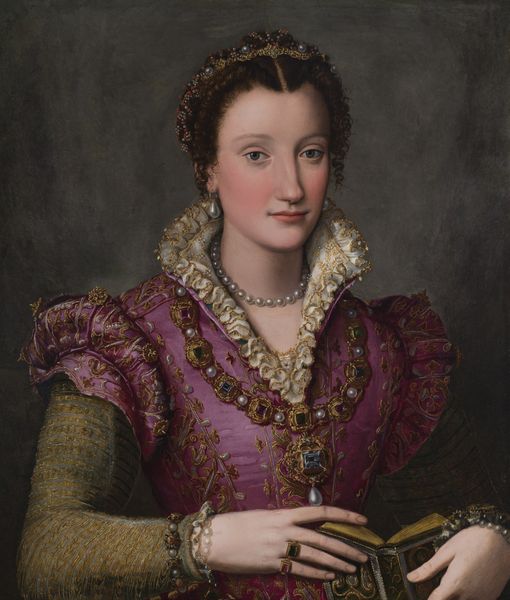
painting, oil-paint
#
portrait
#
painting
#
oil-paint
#
mannerism
#
history-painting
#
italian-renaissance
Copyright: Public domain
Editor: Here we have Agnolo Bronzino's "Portrait of Lucrezia de' Medici" from 1560, oil on panel. I find the color palette so fascinating. What draws your attention in this work? Curator: The composition strikes me. Notice the stark contrast between the dark background and the subject’s fair skin and elaborate attire. This use of chiaroscuro not only highlights Lucrezia’s status but also directs our gaze meticulously. Note how Bronzino uses color, or rather the careful absence of it, to create form and texture. Observe how each bead, each fold of fabric is meticulously rendered. How might we interpret this detail? Editor: Well, her garments are a source of information. It seems as if every detail signifies her noble stature, don't you think? Also, I thought that her gaze appears aloof and distant. Curator: Indeed. However, the dress is only an elaborate geometrical field. Can you see how the shapes create a sense of rigid structure around her body? It constrains her physically, but it directs the eye, no? And the so-called "aloofness" may speak to a detachment. I invite you to contemplate the smooth surfaces—the skin, the pearl—and the interplay between these contrasting textures. Do they suggest something about the work as a whole? Editor: Yes, the textures add to this richness of detail... everything is calculated. Considering it that way, I begin to understand the emotionless effect! Thanks! Curator: Precision, balance, and harmony, achieved through structure. It offers much to contemplate.
Comments
No comments
Be the first to comment and join the conversation on the ultimate creative platform.
